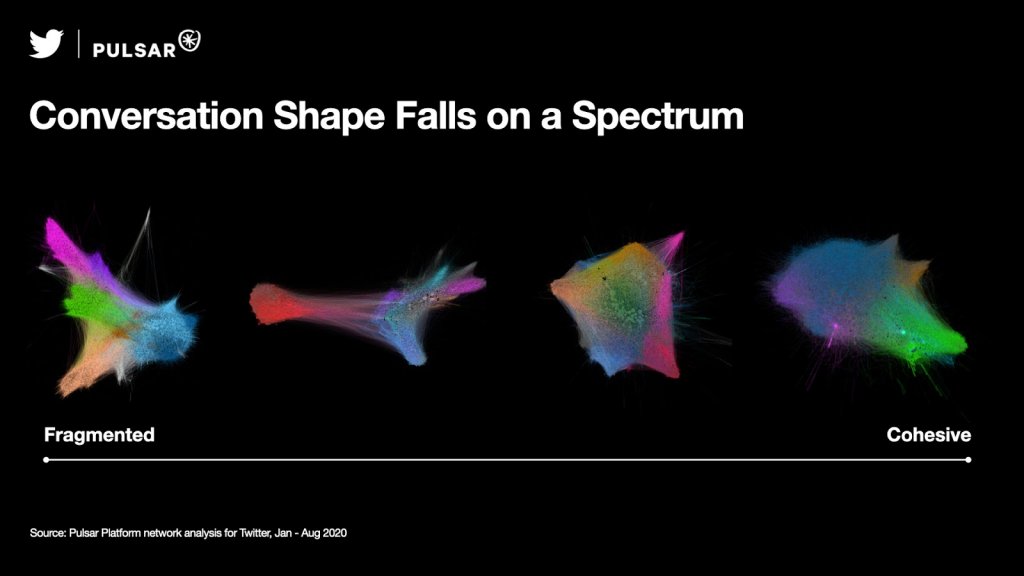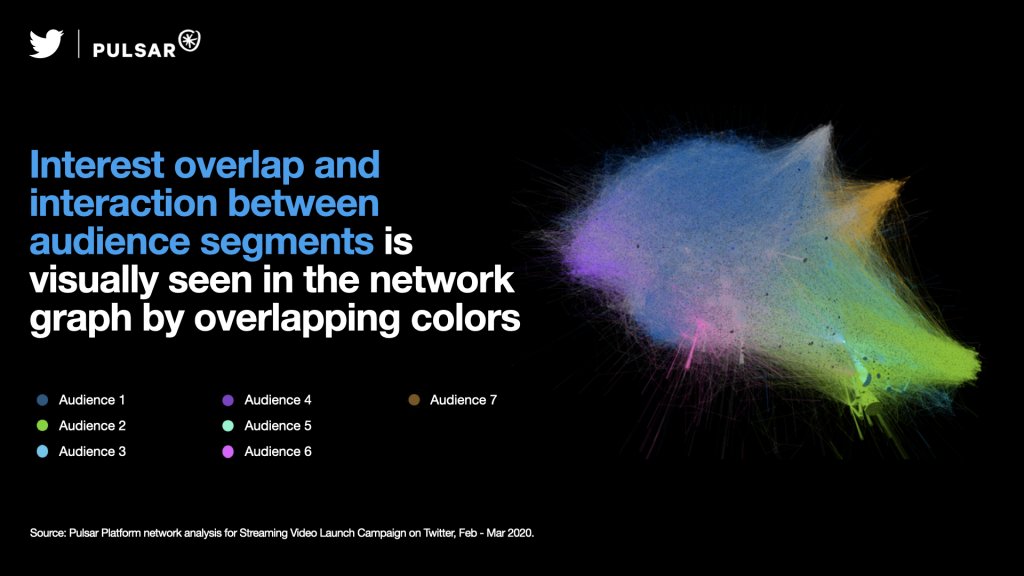The ‘shape’ of the audience & the Twitter/Pulsar partnership – Q&A

You might have heard about our new insight partnership with the Twitter research team to deliver a new kind of audience intelligence for advertisers. The premise of our research is that the social ties and affinity networks in an audience predict how ideas spread, and how content travels – something that has far-reaching consequences to how advertisers want to structure their brand campaigns.
We sat down –virtually– with our VP of Research & Strategy Marc Geffen, who led this project on the Pulsar side, working alongside the Twitter team to better understand the significance of this research project. (We recommend you read the announcement first)
Q: How should brands be thinking about 'the shape' of any given conversation on social media in order to achieve their marketing objectives? Why does “shape” matter more than other characteristics?
In spaces where two-way engagement happens, the shape of an audience is a key factor in how ideas and content spreads. Conversation and audience “shapes” hold clues as to how and why certain campaigns are successful.
We find that analyses which consider the audience, the communities and personas within, and reveal the fragmentation or cohesion of the audience, provide high signal insights. Working from a fragmented vs. cohesive model, we can begin to understand how to most effectively reach a critical mass of the audience, how to personalize content by community to increase relevance, and ways to influence the spread of content and conversation.

Q: What does this research tell us about the public conversation on Twitter? What’s happening here that doesn’t happen elsewhere on the web?
Twitter conversation tends to be quite decentralized and organic, where people can absorb and amplify conversation from both users they follow and those they don’t. This means that conversation can happen between a brand and the public, between an influencer and the public, peer-to-peer, or some mix. And all the while others can observe and join-in those conversations, which means organic interactions can really pick up momentum and achieve scale.
These dynamics of Twitter conversation evolved over time. When we look at the shape of conversation on Twitter, around a brand campaign, let’s say, it’s now rare to see a pure “hub and spoke” shape which you might have seen in the earlier days of Twitter, where the brand node would dominate and few fandoms or influencers would join in to balance the conversation.
Now, two-way engagement - users connecting with the brand and other users - is key to virality. For brands and individual users alike, Twitter uniquely offers tons of access (open communication with other high-influence users) and reach potential (ability to engage a wide range of audience communities, at scale). At the same time, this means an advertiser shouldn’t simply rely on a high-impressions broadcast strategy in order to generate high awareness.
We believe that spend plays a critical role in setting the conditions for virality or conversation spread. In our studies, we’ve seen that if an advertiser’s content is well distributed, reaching all communities to some degree - or at least hitting the high-priority communities - it can improve the odds of penetrating communities enough to ultimately make connections between communities in the broader audience.

Q: What was the most surprising part of this research? And which one was the most challenging, from a methodological standpoint?
Prior studies of Twitter conversation often focused on the interactions network, i.e. the network of tweets and retweets; however this approach leads us to see the symptom, not the cause, of the conversation shape. It’s okay for hindsight, but not very useful for planning.
In thinking about conversation shapes, we’ve learned that we need to place more emphasis on the audience, the social graph, and how it can influence how interaction patterns play out, e.g. how conversation gets sparked and does or does not sustain based on the composition of the audience. Insights about audience shape can unlock jobs to be done for targeting, content strategy, and spend strategy.


